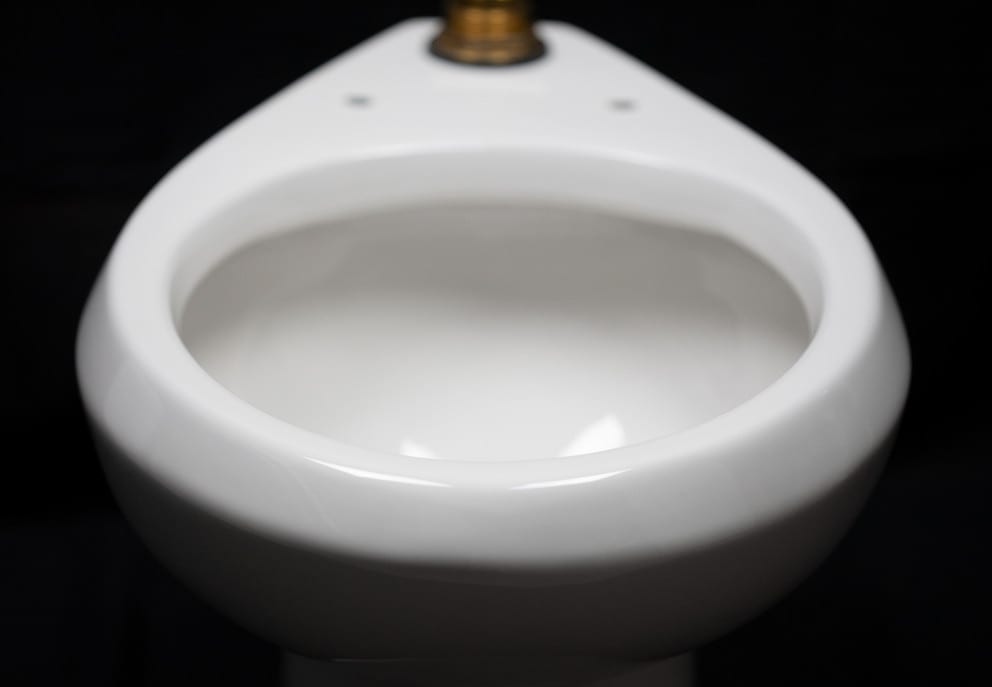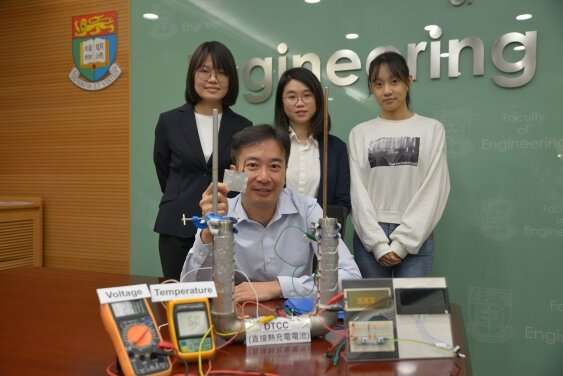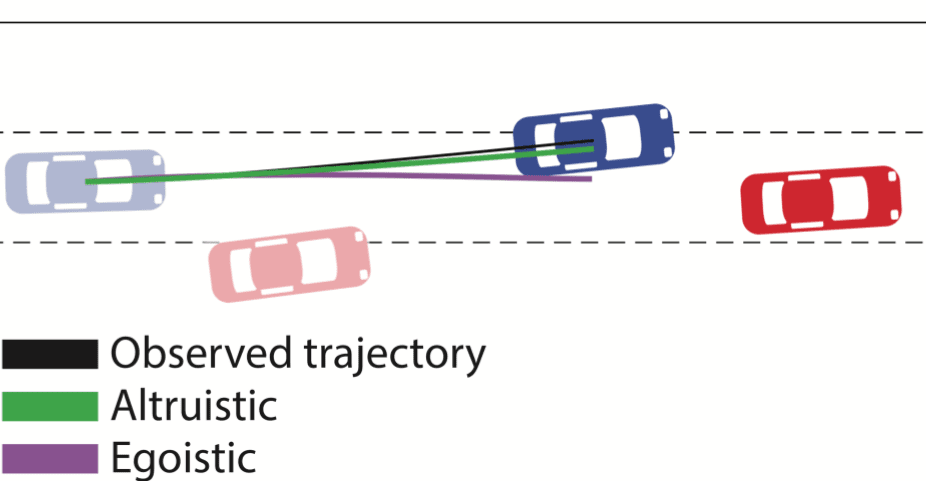
Innovative coating could reduce toilet water consumption by half, increase water sustainability
Every day, more than 141 billion liters of water are used solely to flush toilets. With millions of global citizens experiencing water scarcity, what if that amount could be reduced by 50%?
The possibility may exist through research conducted at Penn State, released today (Nov. 18) in Nature Sustainability.
“Our team has developed a robust bio-inspired, liquid, sludge- and bacteria-repellent coating that can essentially make a toilet self-cleaning,” said Tak-Sing Wong, Wormley Early Career Professor of Engineering and associate professor of mechanical engineering and biomedical engineering.
Penn State researchers have developed a method that dramatically reduces the amount of water needed to flush a conventional toilet — a bio-inspired, liquid, sludge- and bacteria-repellent coating that can essentially make a toilet self-cleaning — described in a paper in Nature Sustainability.
In the Wong Laboratory for Nature Inspired Engineering, housed within the Department of Mechanical Engineering and the Materials Research Institute, researchers have developed a method that dramatically reduces the amount of water needed to flush a conventional toilet, which usually requires 6 liters.
Co-developed by Jing Wang, a doctoral graduate from Wong’s lab, the liquid-entrenched smooth surface (LESS) coating is a two-step spray that, among other applications, can be applied to a ceramic toilet bowl. The first spray, created from molecularly grafted polymers, is the initial step in building an extremely smooth and liquid-repellent foundation.
“When it dries, the first spray grows molecules that look like little hairs, with a diameter of about 1,000,000 times thinner than a human’s,” Wang said.
While this first application creates an extremely smooth surface as is, the second spray infuses a thin layer of lubricant around those nanoscopic “hairs” to create a super-slippery surface.
“When we put that coating on a toilet in the lab and dump synthetic fecal matter on it, it (the synthetic fecal matter) just completely slides down and nothing sticks to it (the toilet),” Wang said.
With this novel slippery surface, the toilets can effectively clean residue from inside the bowl and dispose of the waste with only a fraction of the water previously needed. The researchers also predict the coating could last for about 500 flushes in a conventional toilet before a reapplication of the lubricant layer is needed.
While other liquid-infused slippery surfaces can take hours to cure, the LESS two-step coating takes less than five minutes. The researcher’s experiments also found the surface effectively repelled bacteria, particularly ones that spread infectious diseases and unpleasant odors.
If it were widely adopted in the United States, it could direct critical resources toward other important activities, to drought-stricken areas or to regions experiencing chronic water scarcity, said the researchers.
Driven by these humanitarian solutions, the researchers also hope their work can make an impact in the developing world. The technology could be used within waterless toilets, which are used extensively around the world.
“Poop sticking to the toilet is not only unpleasant to users, but it also presents serious health concerns,” Wong said.
However, if a waterless toilet or urinal used the LESS coating, the team predicts these types of fixtures would be more appealing and safer for widespread use.
To address these issues in both the United States and around the world, Wong and his collaborators, Wang, Birgitt Boschitsch, and Nan Sun, all mechanical engineering alumni, began a start-up venture.
With support from the Ben Franklin Technology Partners’ TechCelerator, the National Science Foundation, the Department of Energy, the Office of Naval Research, the Rice Business Plan Competition and Y-Combinator, their company, spotLESS Materials, is already bringing the LESS coating to market.
“Our goal is to bring impactful technology to the market so everyone can benefit,” Wong said. “To maximize the impact of our coating technology, we need to get it out of the lab.”
Looking forward, the team hopes spotLESS Materials will play a role in sustaining the world’s water resources and continue expanding the reach of their technology.
“As a researcher in an academic setting, my goal is to invent things that everyone can benefit from,” Wong said. “As a Penn Stater, I see this culture being amplified through entrepreneurship, and I’m excited to contribute.”
Learn more: New, slippery toilet coating provides cleaner flushing, saves water
The Latest on: Liquid-entrenched smooth surface coating
- Read Infotainment Newson April 24, 2024 at 4:44 pm
Pineal XT Liquid Supplement claims to help individuals ... function and has the ability to influence brain activity. On the surface, Pineal XT's natural formula supports the nervous system ...
- New liquid coating on solar panels improves efficiencyon April 10, 2024 at 2:48 am
Solar Eclipse 2024: Is it safe to capture solar eclipse with your mobile phone? Heres what NASA has said NASA confirms the Solar Eclipse of 2024. Safety tips shared for photographing the Sun ...
- The Secret Science of SODAon March 28, 2024 at 11:45 am
Why does soda bubble so much when you pour it on ice cream to make an ice cream soda? Ice cream may look smooth to you, but if you could see it with a powerful microscope you would see something ...
- Introducing multi-component liquid-infused surfaces for adaptive and functional coatingson March 6, 2024 at 12:52 pm
More information: Zachary Applebee et al, Multi-component liquid-infused systems: a new approach to functional coatings, Industrial Chemistry & Materials (2024). DOI: 10.1039/D4IM00003J Provided ...
- The 10 Best Car Detailing Kitson December 20, 2023 at 6:59 pm
The company develops, manufactures, and bottles all of its liquid car care products ... If the finish doesn’t feel smooth as glass, then the paint is due for a clay bar treatment. This step will ...
- 3D Printering: Print Smoothing Tests With UV Resinon March 8, 2018 at 2:20 am
Besides good old sanding, another method is to apply a liquid coating of some kind that fills in irregularities and creates a smooth surface. There’s even a product specifically for this purpose ...
- Nonstick Coatings Informationon February 11, 2018 at 7:07 am
Many superhydrophobic coatings use nanostructured surface, nanoparticles, nanosized fibrils, or nanorods coated with a very hydrophobic non-polar, hydrocarbon, or wax-like material. Young’s equation ...
- Coating and Spray Booths Specificationson February 11, 2018 at 6:45 am
Spray / Atomization (Wet) A coating process using wet spray paint or fluid coating media where a spray gun directs a coating or paint aerosol toward the part's surface ... mixer to maintain the ...
- Distant Oasison October 23, 2017 at 2:00 am
Europa's frozen, fissured surface, seen here in a colorized mosaic image from the Galileo spacecraft, hides a liquid ocean that may hold all the ingredients needed for life. Three key ingredients ...
- DIY Powder Coatingon October 25, 2015 at 6:14 am
If you don’t yet have a toaster oven you can’t use with food, here’s yet another reason: DIY powder coating. Powder coating is much harder and more durable than paint – a property imbued ...
via Bing News
The Latest on: Toilet water consumption
- Why Do People Use Toilet Bowl Cleaner To De-Grime Their Shower & Should You?on April 28, 2024 at 11:10 am
Toilet bowl cleaner is effective at keeping your bowl sparkling clean, but could it have a similar effect when it comes to ridding your shower of pesky grime?
- Energy Adviser: Water use changes can add upon April 26, 2024 at 11:05 pm
Inside your home, fix any leak you find. According to Ecology, a leaky toilet can waste up to 200 gallons of water per day, that’s the same as flushing more than 50 times for no reason. Use the ...
- Local gas station owner stuck with $600 dollar water bill after water leak goes unfixedon April 26, 2024 at 2:01 pm
An Opelousas store owner is not to happy about his recent water bills which are $600.00. He questions the city about the bills, but receives no response ...
- These Are the 10 Germiest Spots in Your Home (Beyond the Toilet)on April 25, 2024 at 1:05 pm
The kitchen is home to some of the biggest culprits.
- Inmates forced to lie in toilet water to stay cool, suit says. ‘Third world conditions’on April 24, 2024 at 9:00 am
“To simply survive, people housed in Texas prisons have had to flood their toilets and lie down in the water on the cell floor to try to cool their bodies,” the lawsuit said. Between 2001 and 2019, ...
- What Is A Bidet? How Does It Work?on April 18, 2024 at 7:14 am
Bidets are sanitary fixtures that have been around for years in some parts of the world, like Europe and Asia, but only growing in popularity in others like the U.S. Both a hygiene and interior ...
- Child burned by toilet water, couple arrestedon April 17, 2024 at 5:00 pm
The arrest warrant stated that digital readings taken by law enforcement of the water inside the toilet showed a temperature exceeding 129.9 degrees Fahrenheit. Flowers and Hemingway surrendered ...
- Three reasons not to toilet train your cat [Ask the Vet]on April 17, 2024 at 2:00 am
Rather than train Cameo to balance on a toilet seat and urinate over a pool of water, offer her litter that’s similar to the soft, sandy soil cats are instinctively drawn to.
- My toilet is sweating. What can I do to stop the condensation?on March 29, 2024 at 3:04 am
Q: When it’s really cold outside — in the 20s or lower — the toilet tank in my powder room develops so much condensation that it drips onto the floor in a measurable amount. The condensation ...
via Bing News










